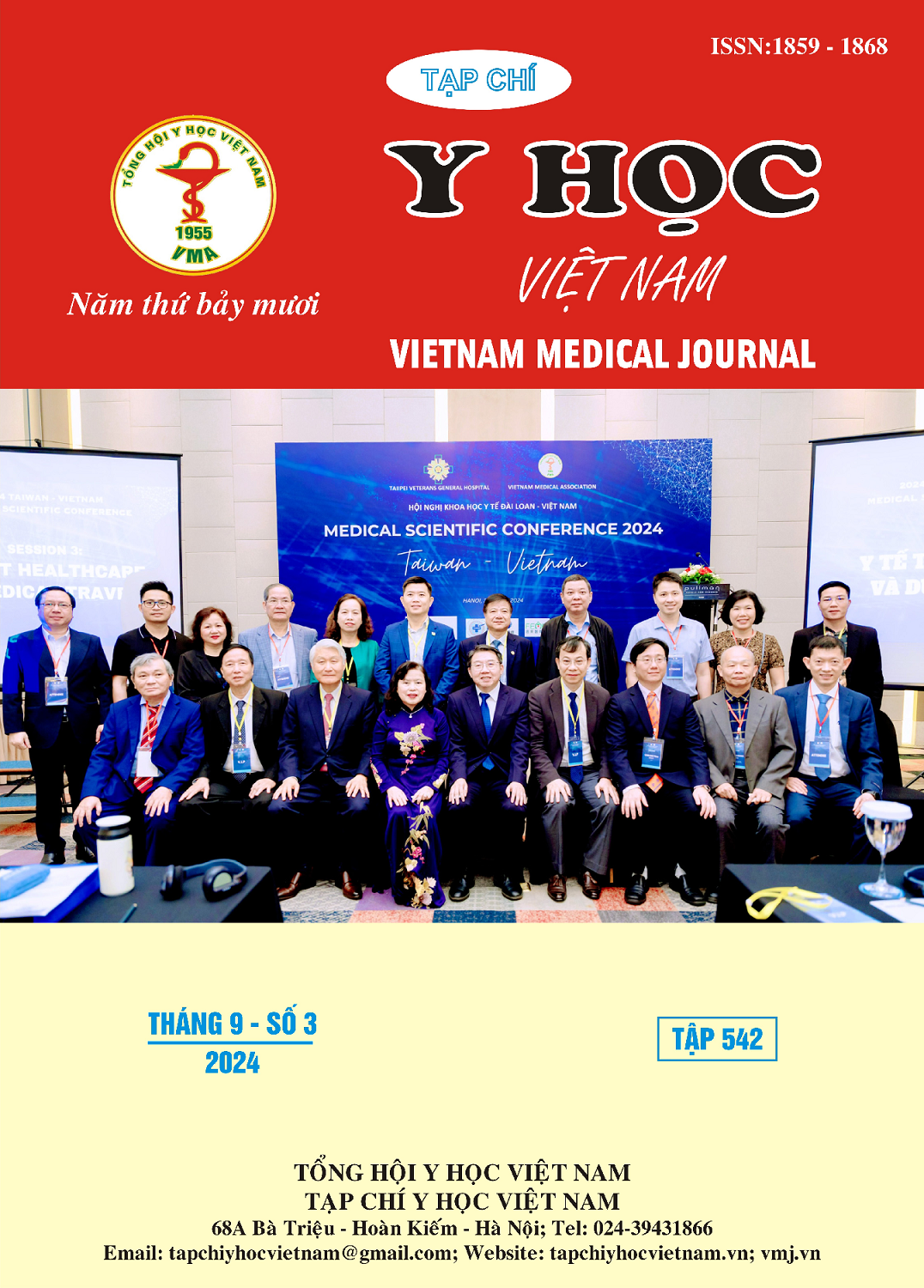SURGICAL OUTCOMES OF LUMBAR-SACRAL FUSION FOR SPONDYLOLISTHESIS
Main Article Content
Abstract
Objectives: Evaluate the surgical outcomes of lumbar-sacral fusion for spondylolisthesis.. Objects and Methods: evaluate the surgical outcomes of lumbar-sacral fusion for spondylolisthesis. Results: There were 73 patients in our study group, with a male-to-female ratio of 1:2 (male: 32.9%, female: 67.1%). The age group 50-59 years had the highest proportion at 27.4%. The average VAS (Visual Analogue Scale) scores for back and leg pain decreased from 6.11 and 4.55 to 2.81 and 1.61 at discharge, respectively. The degree of correction showed that 56 patients (76.7%) were corrected to grade 0 slippage, and there were no cases of grade III slippage postoperatively. All screws (100%) were placed according to Lonstein's criteria. The placement of the graft (2/3 anterior to the vertebral body) was correct in 97.3% of cases, with no dislocations reported. At 6 months post-operation, the VAS score for back pain significantly improved (P<0.05). Additionally, 78.7% of patients achieved grade 2 bone union at 6 months post-operation. Conclusion: Lumbar-sacral fusion surgery is an effective treatment for spondylolisthesis, providing pain relief, a high rate of bone fusion, and a low risk of complications.
Article Details
References
2. Wang MY, Oh BC, Aho CJ. Lateral Lumbar Interbody Fusion. In: Kim DH, Vaccaro AR, Henn JS, Dickman CA, eds. Surgical Anatomy & Techniques to the Spine. W.B. Saunders; 2006: 272-279. doi:10. 1016/B978-1-4160-0313-7.50038-X.
3. Thornhill BA, Green DJ, Schoenfeld AH. Imaging Techniques for the Diagnosis of Spondylolisthesis. In: Wollowick AL, Sarwahi V, eds. Spondylolisthesis: Diagnosis, Non-Surgical Management, and Surgical Techniques. Springer US; 2015:59-94. doi:10.1007/978-1-4899-7575-1_6
4. Johnsen LG, Brinckmann P, Hellum C, et al. Segmental mobility, disc height and patient-reported outcomes after surgery for degenerative disc disease: a prospective randomised trial comparing disc replacement and multidisciplinary rehabilitation. Bone Jt J. 2013;95-B(1):81-89. doi:10. 1302/0301-620X.95B1.29829
5. Vaccaro AR, Bono CM, eds. Minimally Invasive Spine Surgery. 1st edition. CRC Press; 2007.
6. Boos N, Aebi M, eds. Spinal Disorders: Fundamentals of Diagnosis and Treatment. Springer-Verlag; 2008. doi:10.1007/978-3-540-69091-7
7. Okuda S, Oda T, Yamasaki R, et al. Posterior lumbar interbody fusion with total facetectomy for low-dysplastic isthmic spondylolisthesis: effects of slip reduction on surgical outcomes: clinical article. J Neurosurg Spine. 2014;21(2):171-178. doi:10.3171/ 2014.4. SPINE 13925
8. Parker SL, Godil SS, Mendenhall SK, et al. Two-year comprehensive medical management of degenerative lumbar spine disease (lumbar spondylolisthesis, stenosis, or disc herniation): a value analysis of cost, pain, disability, and quality of life: clinical article. J Neurosurg Spine. 2014;21(2):143-149. doi:10.3171/ 2014.3.SPINE1320.
9. Choi W-S, Kim J-S, Ryu K-S, et al. Minimally Invasive Transforaminal Lumbar Interbody Fusion at L5-S1 through a Unilateral Approach: Technical Feasibility and Outcomes. BioMed Res Int. 2016;2016: 2518394. doi:10.1155/2016/2518394.
10. Dương Thanh Tùng (2020). Nghiên cứu điều trị trượt đốt sống đoạn thắt lưng cùng một tầng bằng phẫu thuật vít cuống cung qua da và ghép xương liên thân đốt. Luận án tiến sĩ Y học, Học viện Quân y.


